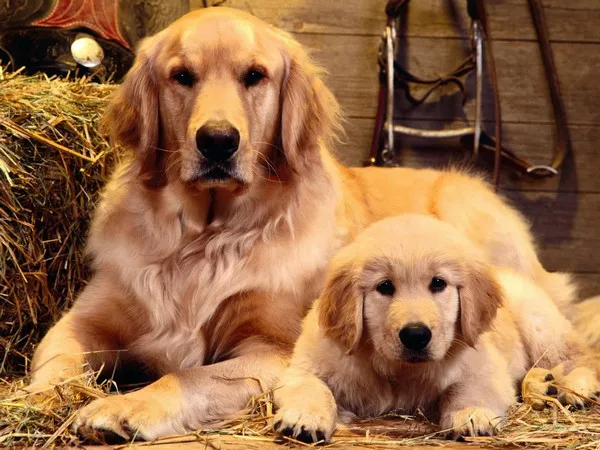Chow Chows are one of the most distinctive and ancient dog breeds in the world. Known for their lion-like mane, deep-set eyes, and aloof demeanor, these dogs also possess a unique feature: a blue-black tongue. This article delves into the reasons behind the Chow Chow’s blue tongue, as well as their species characteristics and living habits.
Origins and History of the Chow Chow
Ancient Heritage
The Chow Chow is an ancient breed, believed to have originated in China over 2,000 years ago. Historical artifacts and writings suggest that these dogs were used for hunting, guarding, and pulling carts. Their sturdy build and keen senses made them invaluable to early Chinese societies.
Royal Companions
Chow Chows were often kept by Chinese nobility and were considered a status symbol. They were also depicted in various Chinese art forms, indicating their importance in ancient culture. The breed’s name, however, is believed to have come from a slang term used by British merchants in the 18th century, which referred to miscellaneous cargo, including dogs.
Physical Characteristics
Distinctive Appearance
Chow Chows have a distinctive appearance that sets them apart from other breeds. They have a broad, deep skull and a short, muscular body. Their most noticeable feature is their dense double coat, which can be rough or smooth. The rough coat is more common and gives the dog its lion-like mane.
Blue-Black Tongue
The blue-black tongue is a hallmark of the Chow Chow breed. While most dogs have pink tongues, Chow Chows are born with pink tongues that darken to blue-black as they mature. This pigmentation is not limited to their tongues; their lips and gums are also blue-black.
Why Do Chow Chows Have Blue Tongues?
Genetic Mutation
The blue-black tongue of the Chow Chow is due to a genetic mutation that results in an excess of melanin, the pigment responsible for dark colors in the skin, hair, and eyes. This mutation is unique to the breed and a few other dog breeds, such as the Shar Pei.
Evolutionary Advantage
There is no definitive explanation for the evolutionary advantage of a blue-black tongue. However, some theories suggest that the dark pigmentation may have offered some protection against sunburn or frostbite, given the breed’s origins in regions with harsh climates.
Breed Purity
The blue-black tongue is also considered a sign of breed purity. If a Chow Chow has a pink tongue, it is often a sign that the dog is not a purebred. This characteristic has been used by breeders and enthusiasts to maintain the breed’s standards over the centuries.
Living Habits of Chow Chows
Temperament and Behavior
Chow Chows are known for their independent and sometimes aloof nature. They are not typically overly affectionate but are incredibly loyal to their families. They tend to be reserved around strangers and can be territorial, making them excellent guard dogs.
Socialization Needs
Due to their reserved nature, early socialization is crucial for Chow Chows. They need to be exposed to different people, environments, and other animals from a young age to ensure they grow up to be well-rounded dogs. Without proper socialization, they can become overly protective or even aggressive.
Exercise Requirements
Chow Chows are not high-energy dogs, but they do require regular exercise to maintain their health and prevent obesity. Daily walks and play sessions are sufficient for this breed. They also enjoy having a secure yard to roam and explore.
Health and Care
Common Health Issues
Chow Chows are prone to certain health issues, including hip dysplasia, elbow dysplasia, and entropion (a condition where the eyelids roll inward). Regular veterinary check-ups and a healthy diet can help manage these conditions.
Grooming Needs
The dense double coat of a Chow Chow requires regular grooming. They need to be brushed several times a week to prevent matting and reduce shedding. During the shedding season, daily brushing is recommended. Bathing should be done as needed, usually once a month.
Nutritional Needs
Chow Chows need a balanced diet that provides the right amount of protein, fat, and carbohydrates. High-quality commercial dog food or a carefully planned homemade diet can meet their nutritional needs. Owners should avoid overfeeding to prevent obesity.
Training and Discipline
Stubborn Streak
Chow Chows are known for their stubbornness, which can make training a challenge. They require a firm but gentle hand and consistent training methods. Positive reinforcement techniques, such as treats and praise, work best with this breed.
See Also: Why Does My Chow Chow Sleep So Much?
Importance of Early Training
Early training is essential for Chow Chows. Basic obedience training should start as soon as the puppy arrives home. Teaching commands like sit, stay, and come can help establish a strong foundation for more advanced training later on.
Leadership and Respect
Chow Chows respond best to confident and consistent leadership. They need to understand their place in the family hierarchy and respect their owner as the pack leader. Without clear boundaries, they may try to assert dominance.
Chow Chows as Family Pets
Suitability for Families
Chow Chows can be excellent family pets, especially for families who understand and respect their independent nature. They are loyal and protective, making them great companions for older children. However, they may not be the best choice for families with very young children due to their reserved and sometimes aloof demeanor.
Compatibility with Other Pets
Chow Chows can get along with other pets if they are properly socialized from a young age. However, their natural instinct to be territorial can sometimes lead to conflicts with other dogs. Supervised introductions and consistent training can help manage this behavior.
Living Conditions
Chow Chows are adaptable to different living conditions, whether in a house with a yard or an apartment. However, they do best in environments where they have enough space to move around and are not left alone for extended periods. They enjoy having a secure outdoor space where they can explore and relax.
Conclusion
Chow Chows are a unique and ancient breed with a distinctive blue-black tongue that sets them apart from other dogs. This characteristic, along with their dense double coat and lion-like appearance, makes them easily recognizable. The blue tongue is a result of genetic mutation and breed purity, symbolizing the breed’s long and storied history.
Chow Chows are known for their independent and loyal nature. They require early socialization, consistent training, and regular exercise to thrive. With proper care, they can be excellent family pets and loyal companions.
Understanding the unique characteristics and needs of the Chow Chow is essential for potential owners. This breed’s distinctive features and rich history make them a fascinating and rewarding addition to the right home. By providing them with the proper care, training, and environment, Chow Chow owners can enjoy a deep and fulfilling bond with these majestic dogs.
Related Topics:























